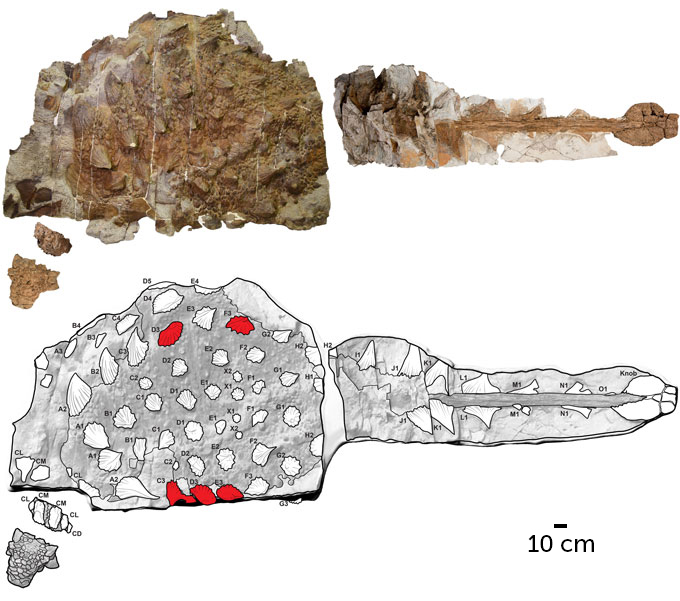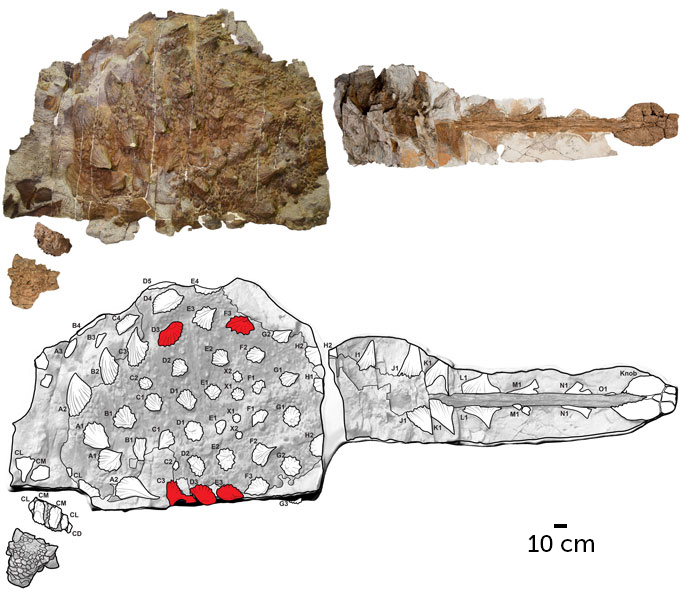Armored dinosaurs with huge, bony knobs on the ends of their tails likely pummeled each other. New fossil findings offer a better understanding of how these rugged plant eaters may have wielded their wicked weapons.
Many of these dinosaurs — known as ankylosaurids (An-kih-low-SOAR-idz) — sported heavy clubs on their tails. Such weapons are like natural sledgehammers, notes Victoria Arbour. A paleontologist in Victoria, Canada, she works at the Royal British Columbia Museum. Some clubs may have been as big as a microwave oven. Scientists and artists have long thought their purpose was to defend against predators, she says.
Explainer: How a fossil forms
Evidence for what the clubs were used against was largely lacking. Arbour was part of a team that gained new clues as they chipped more rock away from a skeleton they’d studied before. In 2017, they used this fossil to describe a new armored dinosaur called Zuul crurivastator.
This dino had five broken pieces of spiky armor on its sides. The team analyzed where the damaged spikes were. They clustered on the abdomen, near the dino’s hips. If a large meat-eating predator had made these injuries, says Arbour, they’d likely be spread more randomly. There might also have been bite and scratch marks.

Instead, they report, the injuries are more consistent with clubbing. Arbour’s team shared its findings December 7 in Biology Letters.
Young armored dinosaurs either lacked tail clubs or had ones too tiny to mount a major defense. But their weapons grew as the dinosaurs got older. Similar growth patterns show up in some modern animal weapons, such as antlers. It’s possible that tank-like ankylosaurs battled each other for mates, food or territory. This would have been sparring, much as male deer and giraffes do today.
That tail might have been useful defense in a pinch, too. “Having a tail club you can swing around at the ankles of a two-legged predator is a pretty effective weapon,” Arbour adds.
“Ankylosaurs are often portrayed as stupid, loner dinosaurs,” she says. The new findings suggest otherwise. “They probably had much more complex behaviors than we give them credit for.”


